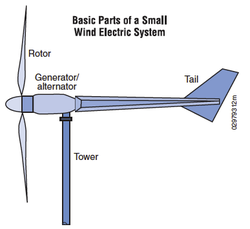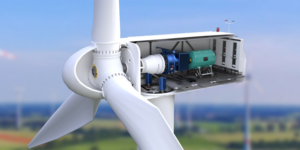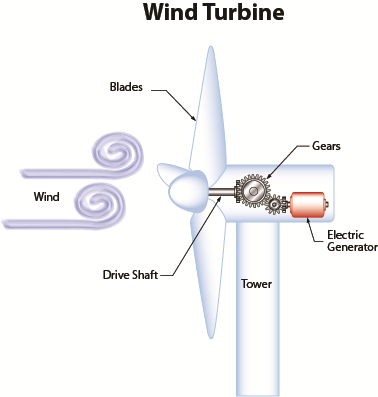If you live in a region with a sufficient amount of wind resources and the conditions are favorable, installing a modest wind electric system in your house is one of the most cost-effective ways to generate renewable energy, producing no emissions or pollutants.
Small wind power systems can do the following:
- Reduce your monthly power costs by between 50 and 90 percent.
- To assist you in avoiding the exorbitant expenses associated with having electricity lines extended to a distant area from a utility company.
- Assist uninterruptible power supply in surviving prolonged interruptions to utility service.
Water pumping on farms and ranches is one of the many uses that smaller wind electric systems may serve in addition to their primary purpose of producing electricity.
More data can be found on the parts of our website devoted to the design of a small wind electric system and the installation and maintenance of a small wind electric system.

Functioning of a Wind-Powered Electric System That Is Not Very Large
The uneven heating of the earth’s surface by the sun causes winds to blow. Wind energy may be converted into clean power using wind turbines, which use the wind’s kinetic energy. When the wind turns the blades of a wind turbine, kinetic energy from the wind is captured by a rotor, which then turns this captured energy into rotational motion that drives the generator. Our animation on wind power provides more information on the operation of wind systems and the advantages that these systems provide.
You may choose to have your small wind system linked to the grid via your electricity provider, or you can choose to have it operate independently (off-grid). Because of this, compact wind electric systems are an excellent option for use in rural regions that do not currently have connections to the electrical grid.
Components of Small Wind Electric Systems
A wind energy system consists of a turbine elevated on a tower to use the higher winds more effectively. Small wind power systems need balance-of-system components in addition to the turbine and the tower to function properly.
Turbines
Most of the smaller wind turbines made nowadays have a horizontal axis and are designed to face upwind. These devices typically have two or three blades. A composite material such as fiberglass is typically used to construct these blades.
The frame of the turbine is the framework onto which other parts of the turbine, such as the rotor, generator, and tail, are mounted. The diameter of a turbine’s rotor is the primary factor that decides how much power it can extract from the surrounding environment. The “swept area” of the rotor, also known as the amount of wind captured by the turbine, is determined by the diameter of the rotor. The tail ensures that the turbine is pointed in the direction of the wind.
Towers
A miniature wind turbine is erected on top of a tower to take advantage of wind speeds increasing with altitude. In general, the taller the tower, the greater the amount of electricity that the wind system may produce.
Towers are often sold as part of wind energy system packages most turbine manufacturers sell. Towers may be broken down into two primary categories: self-supporting, sometimes free-standing, and guyed (supported with wires). There is also a variation of each tower type that is tilted downward.
Tilt-down towers are often more costly, making it simpler and quicker to undertake maintenance checks. During times of severe weather, such as hurricanes, tilt-down towers have the capability of being lowered to the ground.

System Components in Balance
Your application will determine which balance-of-system components, in addition to the wind turbine and the tower, you will require for a small wind electric system. These components are used in conjunction with the wind turbine. For instance, the components needed for a water pumping system will be quite different from those necessary for an application in a residential setting.
Different components will be needed to maintain a stable balance if your system is grid-connected, standalone, or a combination.
You may get a system package from both the manufacturers and the installers, and this package will have all the components you need for your specific application. The following items might be considered part of the balance-of-system components for a home grid-connected application:
- A controller
- Storage batteries
- An inverter (power conditioning unit)
- Wiring
- The cutoff switch for the electrical system
- a system for grounding
- Laying the groundwork for the skyscraper

